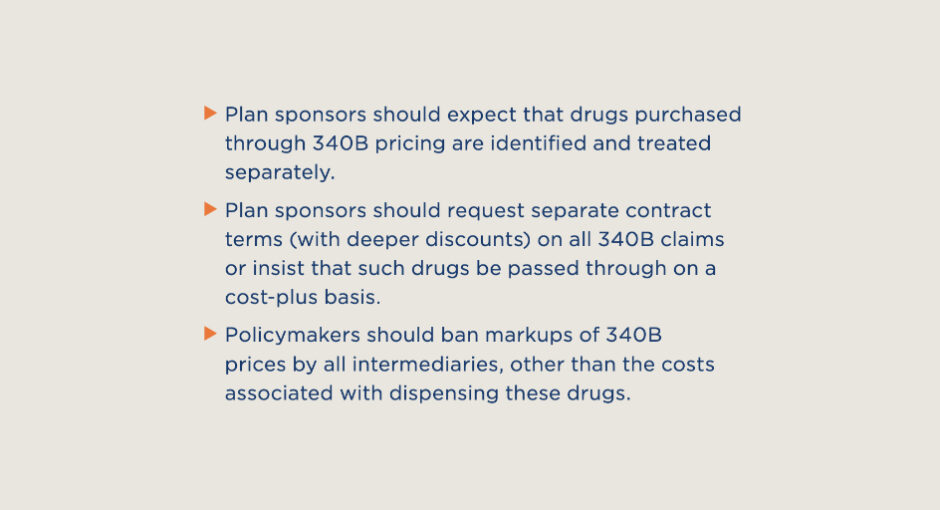A new “playbook” for employers on getting the upper hand with pharmacy benefit managers says PBM handling of 340B drugs is a top 10 concern for business-sponsored health plans.
Released yesterday by the Washington, D.C., based National Alliance of Healthcare Purchaser Coalitions, the guide says plan sponsors should make PBMs identity and treat 340B-purchased drugs separately.
“Plan sponsors should request separate contract terms (with deeper discounts) on all 340B claims or insist that such drugs be passed through on a cost-plus basis,” NAHPC said. “Policymakers should ban markups of 340B prices by all intermediaries, other than the costs associated with dispensing these drugs.”
The recommendations mostly are at odds with laws in 27 states forbidding PBM discrimination against 340B covered entities and their contract pharmacies. Bipartisan federal legislation, the PROTECT 340B Act, would extend such protections nationally.
NAHPC represents 43 regional, state, and local associations of businesses, labor unions, universities, and others that pay for employees’ or members’ health care and prescription drug coverage.
NAHPC asked members of an advisory committee plus individual purchasers that worked on the playbook what their top 10 PBM concerns are. Number eight is, “Replacing drugs eligible for rebates with 340B drugs not eligible for rebates, without passing through the substantially lower price of 340B drugs (continuing to charge plan sponsors and patients the same inflated list price).”
Sample language in the playbook for contracts with PBMs says plan sponsors should insist that PBMs include “a full claims file” with all invoices for covered claims. The file should include “ingredient cost, dispensing fee, member cost share (e.g., co-pay, coinsurance) and any other amount (e.g., deductible, co-pay penalty) paid by the member on each claim.”
Further, “340B claims shall be clearly marked as such on the claims file,” the sample contract language says, and “all claims excluded from a pricing discount guarantee or guaranteed minimum rebate amount calculation shall be marked as such in the claim file, with unique and explicit identifiers which are explained to plan sponsor in writing.”
“Because 340B claims are not eligible for rebates, they may be omitted from rebate-per-script guarantees,” explained a different chapter of the playbook entitled “The Unintended Impact of 340B.”
The chapter said instead of serving low-income and uninsured patients as designed, 340B “enriches intermediaries across the supply chain, adding costs for purchasers and patients.”
“Rather than channel savings to enhance services for the targeted population, 340B has become a major profit center for intermediaries, who mark up the drugs and pocket the difference,” the chapter said. “The problem has been compounded as qualifying entities contract with other related entities to take advantage of the 340B pricing. Instead of passing along savings to patients or purchasers, these entities usually pocket the difference between standard, inflated list prices and 340B prices as another source of profits.”
“The issue is further exacerbated by PBM contracts, since PBMs continue to establish the pricing at inflated list prices, but there are no rebates on 340B drugs (which are discounted heavily up front, leaving no room for rebates),” the chapter said. “This means that while intermediary profits on 340B drugs soar, purchaser costs increase substantially when 340B drugs are used (if the purchaser pays the same inflated list price without counter-balancing rebates).”


